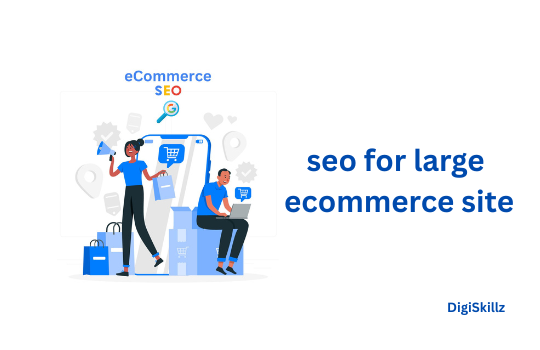In today’s digital world, social media isn’t just for fun—it’s a powerful tool for connecting with people around the globe. But to truly stand out online, you need a strong social media content strategy. This strategy is like a roadmap that guides what you post, when you post, and where you share your content. In this blog, we’ll explore what a social media content strategy is and share some easy tips to help you reach more people and get them engaged with your content.

Social media is no longer just a platform for staying in touch with friends or sharing photos of your lunch. Today, it’s a powerful tool for businesses, influencers, and individuals who want to connect with a global audience. But simply having a social media presence isn’t enough. To truly stand out in the crowded online space, you need a well-thought-out social media content strategy. This strategy serves as your roadmap, guiding everything from what you post to when and where you post it. In this blog post, we’ll dive deep into what a social media content strategy is, why it’s important, and share some essential tips to help you maximize engagement and reach across your social media platforms.
Table of Contents
What is a Social Media Content Strategy?

A social media content strategy is a plan that outlines your goals for social media, the type of content you’ll create, and how you’ll distribute it across various platforms. Think of it as a blueprint that helps you stay focused and consistent in your social media efforts. Without a strategy, your social media presence can feel disorganized and chaotic, leading to lower engagement and missed opportunities.
A well-crafted social media content strategy helps you connect with your audience on a deeper level, increase brand awareness, drive traffic to your website, and ultimately achieve your business or personal goals. Whether you’re a small business owner, an aspiring influencer, or a seasoned marketer, having a clear strategy is crucial to your success.
Why Are Engagement and Reach So Important?
Before we jump into the tips, it’s essential to understand why engagement and reach are two of the most critical metrics in your social media content strategy.
Engagement refers to how people interact with your content—whether they’re liking, commenting, sharing, or clicking on your posts. High engagement indicates that your content is resonating with your audience, sparking conversations, and encouraging them to take action. When your audience engages with your content, it increases the visibility of your posts through algorithms, making them more likely to appear in others’ feeds.
Reach is the total number of people who see your content. The greater your reach, the more people are exposed to your brand or message. Reach is essential because it represents your potential audience size and the number of people you can influence. A high reach combined with strong engagement is a winning combination for growing your social media presence.
Now that we understand the importance of engagement and reach, let’s explore some actionable tips to help you maximize these metrics through a well-planned social media content strategy.
Tips for Maximizing Engagement and Reach

1. Know Your Audience Inside and Out
The foundation of any successful social media content strategy is a deep understanding of your audience. Who are they? What do they care about? What challenges do they face? What kind of content do they enjoy? Taking the time to answer these questions will help you create content that meets your audience’s needs.
To get to know your audience better, start by analyzing your existing followers. Look at their demographics, such as age, gender, location, and interests. Many social media platforms provide insights and analytics that can give you this information. Additionally, pay attention to the type of content that gets the most engagement. Are your followers more likely to interact with videos, photos, or blog posts? Do they prefer educational content, entertainment, or inspirational messages?
Once you have a clear picture of who your audience is, you can tailor your content to meet their preferences. This personalized approach will make your audience feel understood and valued, leading to higher engagement and stronger connections.
2. Set Clear Goals for Your Social Media Content Strategy
Every successful social media content strategy starts with clear, measurable goals. What are your goals for using social media? Are you looking to increase brand awareness, drive more traffic to your website, generate leads, boost sales, or build a loyal community of followers?
Your goals will shape your content strategy and determine the type of content you create, the platforms you use, and how you measure success. For example, if your goal is to increase brand awareness, you might focus on creating visually appealing content that tells your brand’s story. If your goal is to drive traffic to your website, you might prioritize content that includes links and call-to-actions.
Set SMART goals – Specific, Measurable, Achievable, Relevant, and Timebound. This approach ensures that your goals are realistic and attainable while giving you a clear way to track your progress.
3. Choose the Right Social Media Platforms
Not all social media platforms are created equal, and not every platform will be the right fit for your social media content strategy. Choose platforms that align with your goals and where your target audience is most active.
For example, if your audience consists of professionals and business owners, LinkedIn might be the best platform for you. If you’re targeting a younger demographic, platforms like Instagram, TikTok, or Snapchat could be more effective. Facebook remains a solid choice for reaching a broad audience, while Twitter is ideal for real-time updates and engaging in conversations.
Don’t feel pressured to be on every platform. It’s better to focus on a few key platforms where you can consistently deliver high-quality content than to spread yourself too thin across multiple platforms. Each platform has its unique features, best practices, and audience expectations, so tailor your content accordingly.
4. Create a Content Calendar
One of the most effective ways to stay organized and consistent with your social media content strategy is to create a content calendar. A content calendar is a schedule that outlines what content you’ll post, when you’ll post it, and where it will be shared.
Planning your content in advance has several benefits:
- Consistency: Posting regularly keeps your audience engaged and ensures that your brand stays top of mind.
- Organization: A content calendar helps you stay organized and prevents last-minute scrambling for content ideas.
- Alignment with Goals: By planning ahead, you can ensure that your content aligns with your overall social media goals and marketing campaigns.
When creating your content calendar, consider including a mix of content types, such as blog posts, videos, images, infographics, and user-generated content. Also, think about important dates, holidays, and events that you can tie into your content strategy. Don’t forget to leave room for flexibility—sometimes, unexpected opportunities or trends arise, and you’ll want to be able to pivot quickly.
5. Leverage High-Quality Visuals
In today’s visually-driven social media landscape, eye-catching visuals are a must-have for any social media content strategy. Visual content, including images, videos, and infographics, is more likely to grab attention, evoke emotions, and encourage engagement than text-based posts alone.
Invest in creating high-quality visuals that reflect your brand’s personality and message. If you’re posting photos, ensure they’re well-lit, properly framed, and visually appealing. Videos should be clear, and engaging, and provide value to your audience. Infographics can be an effective way to present complex information in a simple, easy-to-understand format.
Remember that each social media platform has its own best practices for visual content. For example, Instagram is all about high-quality images and short videos, while Facebook allows for a mix of long-form videos, images, and text. Tailor your visuals to fit the platform you’re using and experiment with different formats to see what resonates best with your audience.
6. Write Compelling Captions and Headlines
While visuals may catch your audience’s eye, it’s the captions and headlines that will keep them engaged. A compelling caption or headline can make the difference between a user scrolling past your post and stopping to read and interact with it.
Here are some tips for writing engaging captions and headlines:
- Keep it Concise: Social media users have short attention spans, so keep your captions and headlines short and to the point
- Write as if you’re speaking directly to your audience.. Use a friendly, conversational tone that makes your followers feel like they’re part of a community.
- Incorporate Calls-to-Action: Encourage your audience to take action by including calls-to-action (CTAs) in your captions, such as “Click the link in our bio,” “Comment below,” or “Share this post.”
- Ask Questions: Asking questions in your captions invites your audience to engage and share their thoughts, leading to higher levels of interaction.
- Use Emojis and Hashtags: Emojis can add personality and emotion to your captions, while hashtags can help increase the visibility of your posts.
Experiment with different styles of captions and headlines to see what resonates most with your audience. Over time, you’ll develop a better understanding of what drives engagement.
7. Engage with Your Audience
Social media is not just a one-way street where you post content and hope for the best. It’s a two-way communication channel that thrives on interaction. Engaging with your audience is a critical component of your social media content strategy.
Respond to comments, answer questions, and acknowledge your followers’ feedback. Show appreciation for your audience by liking their posts, sharing user-generated content, and participating in conversations. Engaging with your audience builds a sense of community and fosters loyalty, making your followers more likely to continue engaging with your content.
Additionally, engaging with your audience helps you gain valuable insights into their preferences, interests, and pain points. This information can inform your future content and help you better meet your audience’s needs.
8. Utilize Hashtags Wisely
Hashtags are a powerful tool in your social media content strategy that can help increase the visibility and reach of your posts. When used correctly, hashtags make your content discoverable to users who are interested in similar topics or searching for specific keywords.
Conclusion
A well-planned social media content strategy is key to boosting your online presence and reaching a wider audience. By understanding your audience, setting clear goals, and using the right platforms and content, you can increase engagement and make a bigger impact. Remember, consistency and creativity are your best tools in the world of social media. Start implementing these tips today, and watch your social media presence grow!











Leave A Comment